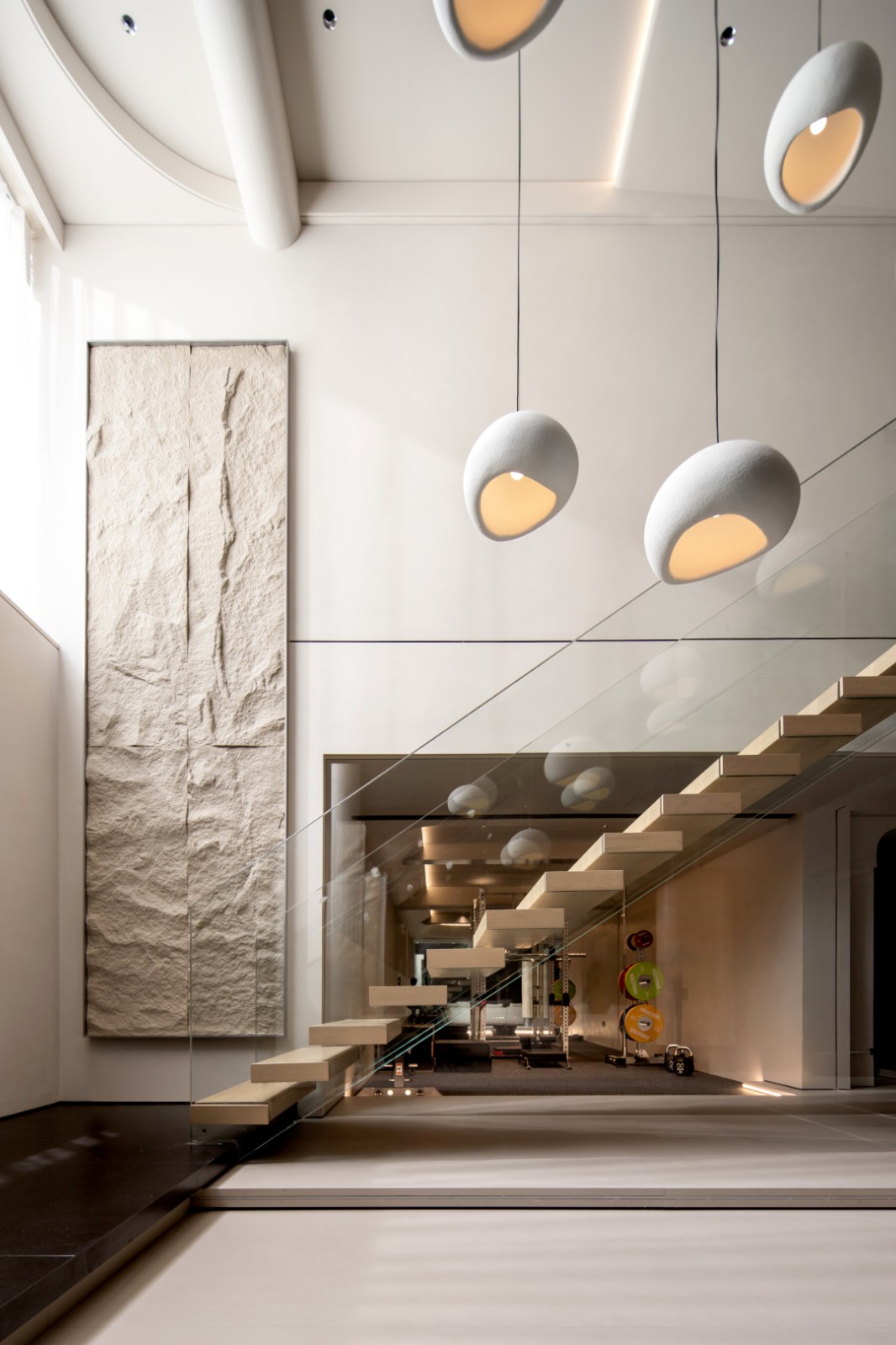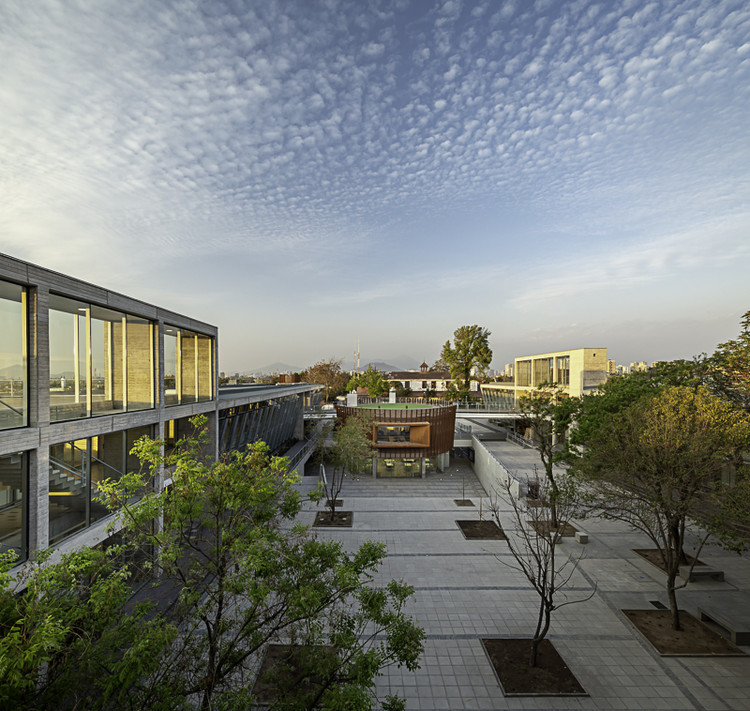Cultural Center in Castelo Branco Mateo Arquitectura
2013-12-11 00:00
架构师提供的文本描述。1-据其作者说,广场是一个表面,一种与水的运动有关的地形,由Pedreiros绘制,遵循抽象但非随机的模式。浮在这一表面上是一个物体。在它的底部,水,冻结在这里形成一个溜冰场。
Text description provided by the architects. 1- The project according to its author The plaza is a surface, a topography drawn out in relation to the movement of the water and built by pedreiros, following patterns that are abstract but not random. Floating on this surface is an object. At its base, water, frozen here to form a skating rink.
文化中心与广场的关系。该项目提出了挑战,以解决公共空间的巨大复杂性,以及卡斯特洛·布兰科历史中心的各种交通和城市问题。此外,文化中心的目标是把这个古镇变成城市的文化神经中枢。
2- The relation between the Cultural Center and the Plaza. The project presented the challenge of addressing the great complexity of the public space and the various traffic and urban problems of the historic center of Castelo Branco. The aim of the Cultural Center, furthermore, was to turn the old town into a cultural nerve center for the city.
该广场在第一阶段(2007年)设计,是为了处理最初的地形问题,并容纳设计去那里的各种建筑物的地点。位于通往城堡的山坡上,它利用地形形成横向条带,在项目的中心空间形成一个广场,其缓缓的斜坡几乎自然地在广场中心、文化中心前形成一个水池。
The plaza, designed in the first phase (2007), is moulded to the site to deal with the initial topographic problems and accommodate the various buildings designed to go there. Located on the slope of the hill that leads to the castle, it exploits the topography to form crosswise strips, giving rise in the central space of the project to a plaza whose gentle slopes give rise almost naturally to a pool of water in the center of the plaza, in front of the Cultural Center.
文化中心建于第二阶段,虽然是最初项目的一部分,但它像一座桥一样,漂浮在广场上的两桩上,在它的底部腾出了一个覆盖着的溜冰场,让这个巨大的公共空间、广场和邻近的公园保持了连续性。它是广场的另一部分,借鉴葡萄牙滑冰的传统和寒冷的大陆气候。与悬挂部分的镀锌钢筋混凝土形成对比的是,它是一个活动泡沫,一个屋顶和一个浮在场地上方的地板,与城市序列、广场和公园有关。
The Cultural Center, built in phase two, though part of the original project, floats on two piles over the plaza, like a bridge, freeing up at its base a covered ice-skating rink, and giving continuity to this large public space, to the plaza and to the adjacent park. It forms another part of the plaza, drawing on the Portuguese tradition of skating and the cold continental climate. With its wooden façade, in contrast to the zinc-clad reinforced concrete of the suspended part, it is a bubble of activity, a roof and a floor that floats above the site, relating the urban sequence, the plaza and the park.
从拉戈达德文萨广场(Praça Largoda Devesa)的褶皱所产生的坡道中,我们来到了卡斯特洛·布兰科文化中心(CasteloBranco)的正门。我们朝它走去,被巨大的̧木板条弄得眼花缭乱,可以调节灯光,从它们在空中的位置俯视着我们。几乎没有我们的意识,这个下降带我们到接待处,位于下面的等级和通向一个伟大的画廊。这层楼也可容纳行政区域。随着楼层水平的变化,一个渐进的斜坡带我们到停车场,供公众使用,它在建筑物和广场下面扩展。
Descending one of the ramps generated by the folds in the paving of Praça Largo da Devesa, we come to the main entrance of Castelo Branco Cultural Center. We move towards it, dazzled by the great façade of wooden slats, adjustable at one point to regulate the lighting, that look down on us from their position in the air. Almost without our realizing, this descent brings us to the reception, situated below grade and leading into a great gallery. This floor also accommodates the administrative area. Continuing with the variations in the floor level, a gradual slope takes us to the car park, for the public, which expands beneath the building and the plaza.
在大楼内部,底层只是一个过渡空间,与上面的楼层相连。然而,在外面,这一层是广场和文化中心之间连接的表现,这里有一个从建筑物的一边延伸到另一边的溜冰场,与它的设置直接相互作用,成为活动的中心。它是一个户外空间,产生运动,颜色,夜间光线和音乐。
Inside the building, the ground floor is just a transition space, connecting with the floors above. On the outside, however, this floor is the manifestation of the connection between the plaza and the Cultural Center, housing an ice rink that extends from one side of the building to the other and interacts directly with its setting, becoming a hub of activity. It is an outdoor space that generates movement, colour, light at night and music.
天窗利用地下的这个洞口,让光线进入地下室的楼层,营造了一种轻盈而舒适的氛围。我们从底层的另一个入口处返回,在木坊̧的下面。在较高的层次上,我们发现礼堂和一个模仿建筑结构的画廊,形成了双高度的空间。
Skylights exploit this opening at ground level to allow light into the basement floor, creating an ambience that is light and welcoming. We go back inside through another entrance on the ground floor, beneath the wooden façade. On the higher levels, we find the auditorium and a gallery that mimic the structure of the building, forming double-height spaces.
在第一层和第二层,展厅位于一层和二层,并有一个坡道来改变建筑物的结构。这样,访问者就可以对空间进行概述。
At one end, the exhibition hall occupies the first and second floors, with a ramp to change level that accompanies the structure of the building. In this way, the visitor has an overview of the space.
在另一端,礼堂也自然地与建筑物的曲线,其座位安排。除了这些空间外,一楼还设有更衣室,可以直接进入舞台。在二楼,舞台对面是控制室和酒吧,与礼堂的正门相连,游客可以在那里放松。这层楼还有一个多用途的空间,在展厅和礼堂之间。顶层提供了卡斯特洛·布兰科(Castelo Branco)令人叹为观止的景观,城堡赋予了这座城市以它的名字。最后,屋顶遮住了所有的机械,在展厅上方的一个巨大天窗中打开,提供了自然的照明。
At the other end, the auditorium also moulds naturally to the curve of the building with its seating arrangement. All in black, it contrasts with the lighter tones of the stage to focus the audience’s attention. In addition to these spaces, the first floor also accommodates the dressing rooms, with direct access to the stage. On the second floor, opposite the stage, are the control room and a bar connected with the main entrance to the auditorium where visitors can relax. There is also a multipurpose space on this floor, enclosed between the exhibition hall and the auditorium. The top floor offers stunning vistas of Castelo Branco, with the castle that gives the city its name. Finally, the roof, concealing all the machinery, opens up in a great skylight over the exhibition hall, providing natural lighting.
 举报
举报
别默默的看了,快登录帮我评论一下吧!:)
注册
登录
更多评论
相关文章
-

描边风设计中,最容易犯的8种问题分析
2018年走过了四分之一,LOGO设计趋势也清晰了LOGO设计
-

描边风设计中,最容易犯的8种问题分析
2018年走过了四分之一,LOGO设计趋势也清晰了LOGO设计
-

描边风设计中,最容易犯的8种问题分析
2018年走过了四分之一,LOGO设计趋势也清晰了LOGO设计





































































